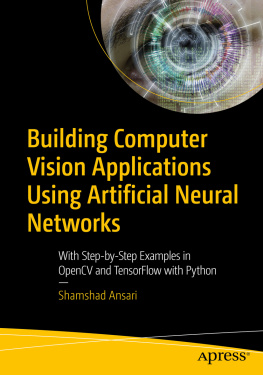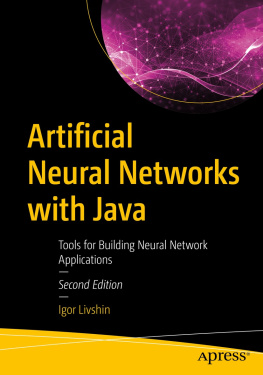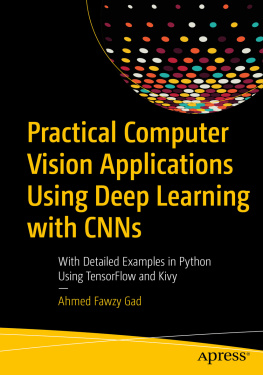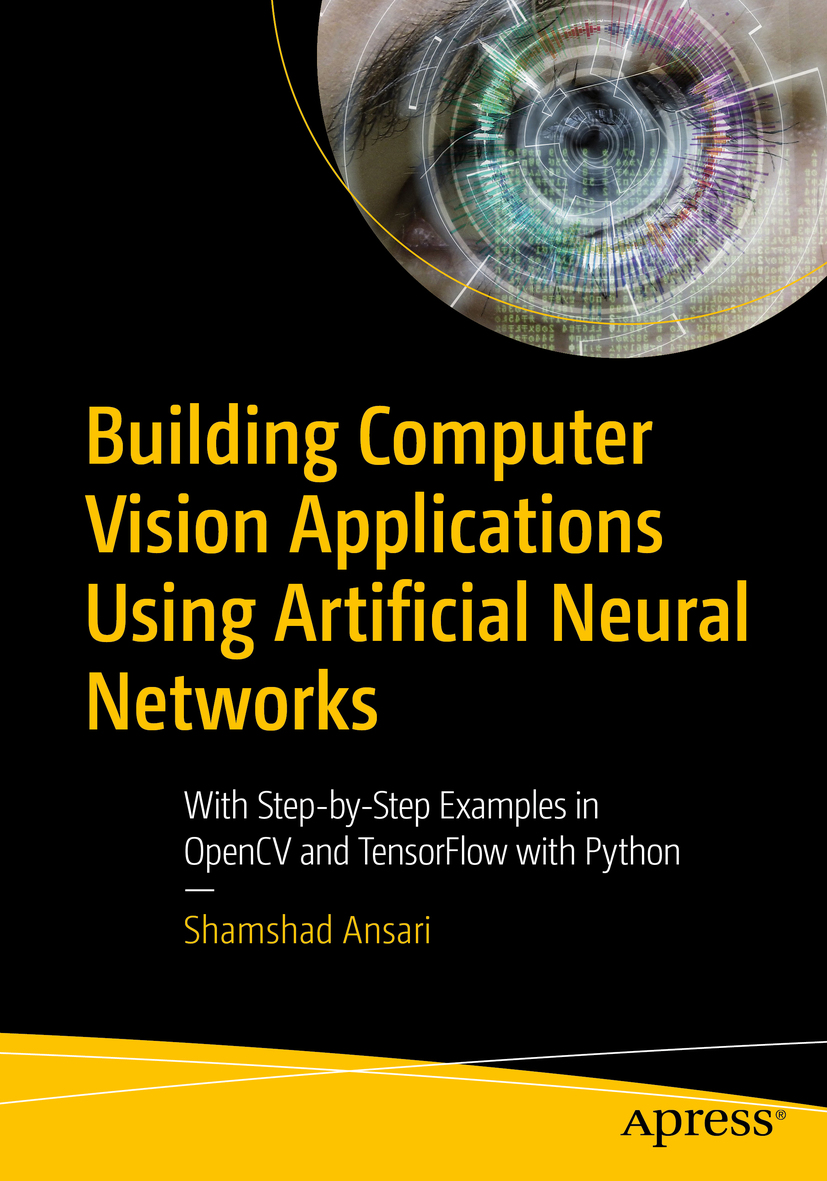Shamshad Ansari - Building Computer Vision Applications Using Artificial Neural Networks: With Step-by-Step Examples in OpenCV and TensorFlow with Python
Here you can read online Shamshad Ansari - Building Computer Vision Applications Using Artificial Neural Networks: With Step-by-Step Examples in OpenCV and TensorFlow with Python full text of the book (entire story) in english for free. Download pdf and epub, get meaning, cover and reviews about this ebook. year: 2020, publisher: Apress, genre: Computer. Description of the work, (preface) as well as reviews are available. Best literature library LitArk.com created for fans of good reading and offers a wide selection of genres:
Romance novel
Science fiction
Adventure
Detective
Science
History
Home and family
Prose
Art
Politics
Computer
Non-fiction
Religion
Business
Children
Humor
Choose a favorite category and find really read worthwhile books. Enjoy immersion in the world of imagination, feel the emotions of the characters or learn something new for yourself, make an fascinating discovery.
- Book:Building Computer Vision Applications Using Artificial Neural Networks: With Step-by-Step Examples in OpenCV and TensorFlow with Python
- Author:
- Publisher:Apress
- Genre:
- Year:2020
- Rating:3 / 5
- Favourites:Add to favourites
- Your mark:
Building Computer Vision Applications Using Artificial Neural Networks: With Step-by-Step Examples in OpenCV and TensorFlow with Python: summary, description and annotation
We offer to read an annotation, description, summary or preface (depends on what the author of the book "Building Computer Vision Applications Using Artificial Neural Networks: With Step-by-Step Examples in OpenCV and TensorFlow with Python" wrote himself). If you haven't found the necessary information about the book — write in the comments, we will try to find it.
Apply computer vision and machine learning concepts in developing business and industrial applications using a practical, step-by-step approach.
The book comprises four main sections starting with setting up your programming environment and configuring your computer with all the prerequisites to run the code examples. Section 1 covers the basics of image and video processing with code examples of how to manipulate and extract useful information from the images. You will mainly use OpenCV with Python to work with examples in this section.
Section 2 describes machine learning and neural network concepts as applied to computer vision. You will learn different algorithms of the neural network, such as convolutional neural network (CNN), region-based convolutional neural network (R-CNN), and YOLO. In this section, you will also learn how to train, tune, and manage neural networks for computer vision. Section 3 provides step-by-step examples of developing business and industrial applications, such as facial recognition in video surveillance and surface defect detection in manufacturing.
The final section is about training neural networks involving a large number of images on cloud infrastructure, such as Amazon AWS, Google Cloud Platform, and Microsoft Azure. It walks you through the process of training distributed neural networks for computer vision on GPU-based cloud infrastructure. By the time you finish reading Building Computer Vision Applications Using Artificial Neural Networks and working through the code examples, you will have developed some real-world use cases of computer vision with deep learning.
What You Will Learn
Employ image processing, manipulation, and feature extraction techniques
Work with various deep learning algorithms for computer visionTrain, manage, and tune hyperparameters of CNNs and object detection models, such as R-CNN, SSD, and YOLO
Build neural network models using Keras and TensorFlow
Discover best practices when implementing computer vision applications in business and industry
Train distributed models on GPU-based cloud infrastructureWho This Book Is For
Data scientists, analysts, and machine learning and software engineering professionals with Python programming knowledge.
Shamshad Ansari: author's other books
Who wrote Building Computer Vision Applications Using Artificial Neural Networks: With Step-by-Step Examples in OpenCV and TensorFlow with Python? Find out the surname, the name of the author of the book and a list of all author's works by series.








